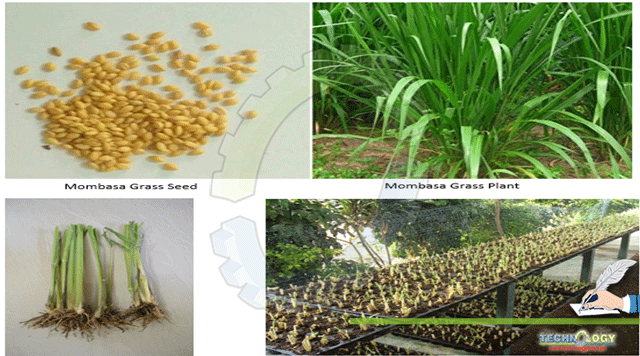There are months in which fodder availability is surplus but the country faces two scarcity periods as well; one from November to December and the other from May to June.

By Fahd Rasul, Mujeeb ur rehman, Hassan Munir*, Ahsan Rasheed, Sobia Shahzad, Sardar Alam Cheema
It happens because farmer divides fodder into groups of winter and summer according to the appropriateness of sowing and harvesting. He has to grow the required fodder according to the weather conditions to get a better yield. Therefore, in the scarcity periods he either has to feed his animals a cheap low-quality fodder or keep them underfed. This ultimately results in the loss of health and the production of animals.
According to FAO worldwide comparison, developed countries with 25 percent of livestock are producing 63 percent milk and 66 percent meat. While only 37 percent milk and 34 percent of meat is being produced by the developing countries (including Pakistan) with 75 percent livestock. As in Pakistan, the daily milk average of a local cow is 8-10 litters a day against 35-40 litters of an American cow.
All of these problems along with the lack of appreciation of the fodder research are the main limiting factors for livestock production in Pakistan. A consistent supply of adequate and nutritious fodder is essential to bridge this gap and to exploit the livestock sector for economic growth and rural uplift as eight million families are involved in livestock raising.
Green fodder is the most essential factor for low-cost livestock production. Due to small holdings and the continuously changing climate in agriculture, it is assumed that fodder crops are only for one season, and that when the season changes, the farmer must be ready to grow new crops. One of the main causes of low productivity in dairy and cattle production is the lack of a 365-day green fodder strategy. Mombasa grass is a perennial and multi-cut crop that promotes this concept. It introduces in Brazil in 1993 from the Tanzanian town ofKorogwe. Mombasa guinea grass is a tall, non-hybrid grass with a habit similar to hybrid Napier grass but much leafier, making it ideal for cut-and-carry. It’s a high-yielding green grass that may produce between 10-15 MT/acre dry matter per year in several cuts, with a crude protein content of 10 to 16 percent. Its name is MOMBASA, which is followed by the name of Kenya’s capital city.
Plant description: Mombasa is a grass, scientific name panicum maxicum. Leafy erect grass with deep root system, capable of growing to over 2m tall. Stem increases to over 0.5cm diameter, leaves are up to 3cm wideand 100cm long. Seed head branched open panicle generally 30 to 45 cm long.
Sowing: Sowing is suggested when the daytime temperature exceeds 30 degrees Celsius and the night-time temperature exceeds 22 degrees Celsius. Germination is delayed or non-existent when the temperature is low. The optimum growth temperature is between 30 and 40°C. Sowing will typically begin in February in the South Punjab and Sindh region and continue until October in Punjab and Sindh, depending on weather, water availability, and soil types.
The most recommended method of sowing is manual seeding on ridges 50 cm apart. The broadcast approach, on the other hand, is a different way to sow the crop. Sowing by nursery transplants is another a popular approach nowadays.Seedlings are ready for transplantation in 35 to 45 days after sowing with 3 to 4 leaves. Water seedling beds, 24 hours before transplanting so that the seedling could be easily uprooted and be turgid at transplanting time. For a Mombasa crop of one acre, 1 kg seed is suggested.

Mombasa Grass root slips Mombasa Grass Nursery
Fertilizer:The amount of fertiliser required is always determined by the soil conditions. However, it is advised that use 01 bag of DAP and 01 bag of Urea during sowing. 01 bag of Single Super Phosphate and 02 bags of NP are advised for high salt-affected soils. After the first cut, one bag of urea or NP should enough.
Harvesting: 1st harvesting is directly link to weather conditions, soil type, water availability, nutrition supply and time of sowing. February sowing take more time to mature rather than April sowing. Temperature plays an important role in vegetative growth. Temperature fluctuation also decrease as time passes from February to April. 1st cut must harvest at the height of 06 feet and generally 06 feet height achieved in 60 – 70 days of sowing. After first cut, further cuts ready in 35-40 days.
Nutrition:Itcontains 8.5% of crude protein(CP), 65.2% of Neutral Detergent Fibre(NDF) and 28.7% of Acid Detergent Fibre (ADF) concentrations considered satisfactory for feed requirement.Overall crude protein is 8% to 10% in peak season and maximum is up to 12 % in spring season. However, it can be maintained in multiple cuts through out the season by maintaining best fertigation. If crop is delayed or over mature for long period, crude protein falls drastically and it never be above 5%. Long harsh dry heat weather also reduces protein content in plant as well as cause low digestibility in rumen. Nitrogen application is the best remedy to overcome this issue.
|
PARTICULARS |
|
|
Parentage |
Clonal selection from Mumbasa |
|
Duration (Days) |
Perennial |
|
Green fodder yield (t/ha/year) |
340-360 (7harvests) |
|
Morphological characters |
|
|
Plant height (cm) |
210-240 |
|
Number of tillers/clumps |
40-60 |
|
Leaf length (cm) |
97- 110 |
|
Leaf width (cm) |
3.2 – 4.5 |
|
Leaf-stem ratio |
0.73 |
|
Quality characters |
|
|
Dry matter (%) |
20.2 |
|
Crude protein (%) |
7.50 |
|
Crude fibre (%) |
30.3 |
|
Phosphorus (%) |
0.19 |
|
Calcium (%) |
0.59 |
Mombasa vs Fodders
|
Fodder |
Proteincontent(%) |
Dry matter (%) |
Harvests |
Green fodder |
|
Mombasa |
7.5 |
20.2 |
7/ year |
320t/ha/year |
|
Sorghum |
9.86 |
25.9 |
6-7/ year |
192 t/ha/year |
|
Napier hybrid |
14 |
22 |
7/year |
360-400 t/ha/year |
|
23.5 |
20 |
12-14/ year |
90-130 t/ha/year |
|
|
Maize |
9.8 |
17.65 |
1/sowing |
40 t/ha |
|
Pearl Millet |
13.9 |
18.2 |
1/sowing |
30 t/ha |
Authors : Fahd Rasul, Mujeeb ur rehman, Hassan Munir*, Ahsan Rasheed, Sobia Shahzad, Sardar Alam Cheema
